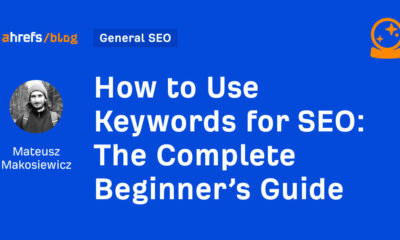SEARCHENGINES
Blocking USA Users But Allowing Googlebot Is Against Google’s Webmaster Guidelines

Google sends its crew of crawlers, Googlebot, from the United States. That is where 99% of the crawling originates from. If you are not allowed to show your website to users based in the United States, then you also cannot show that website to Googlebot.
You cannot show content to Googlebot when a user trying to access that same page will not see that content from the same region. Google’s John Mueller said it would be against Google’s webmaster guidelines to show Googlebot the content but then show a US based user a screen that says they are not allowed to see this content because of their location.
You can do the opposite, show US based users content but hide it from maybe folks in Russia with a disclaimer of sorts, and that would not be against Google’s guidelines. Why? Because Googlebot crawls from the US, not from Russia.
This is not new, we covered it numerous times but it came up again recently. Here is the recent context:
P.S. never use location-based redirects. Google mostly crawls from America and you are shooting yourself in the foot.
— Billie 🦕 (@BillieGeena) March 1, 2022
That would be against the webmaster guidelines.
— 🐐 John 🐐 (@JohnMu) March 1, 2022
The usual recommendation is to publish something that can be accessed from the US, and to refer to the detailed content from there. It’s not great, blocking users isn’t great, but laws/policies are hard sometimes.
— 🐐 John 🐐 (@JohnMu) March 1, 2022
So if you want to block countries outside of the US, you can do that, if you want – just saying. But you cannot block users from the US.
Forum discussion at Twitter.
SEARCHENGINES
Daily Search Forum Recap: May 13, 2024
Here is a recap of what happened in the search forums today, through the eyes of the Search Engine Roundtable and other search forums on the web.
Google explains the differences between algorithm updates, data refreshes and more – again. Google Search Console doesn’t keep data for de-indexed URLs. Google lifted some of the manual actions over the site reputation abuse policy. Google said the video needs to be super obvious on the page for it to be a video page. Google Ads updated its disclosure policy for event ticket pages. Google I/O is tomorrow – I decided not to attend in person, it is just easier to cover at my desk.
Search Engine Roundtable Stories:
-
Google Again On Difference Between Algorithm Updates & Data Refreshes
Danny Sullivan, Google’s Search Liaison, posted on X explaining the differences between algorithm updates, like core updates, and then data refreshes, the data that goes into those ranking systems. This is actually something Matt Cutts, former Googler, did back in 2006, on his blog and now Danny Sullivan did a short version of it on X. -
Google Lifts Some Site Reputation Abuse Policy Penalties
About a week ago, we reported that Google began enforcing its new site reputation abuse policy by issuing manual actions and ranking penalties for those sites that violated those policies. Google seems to be now lifting some of those manual actions where the sites took the necessary action and no longer are violating the policy. -
Google Search Console Doesn’t Keep Data For Most De-Indexed Pages
Gary Illyes from Google said on LinkedIn that Google Search Console doesn’t “keep (almost) any data for un/de-indexed.” -
Google: Video Pages Need To Be Super-Obvious Video Play Pages
In April 2023 and December 2023 Google changed how it classifies what it would consider video pages. In short, the video on the page needs to be the main piece of content for Google to show it a video thumbnail in the search results and to show it in the videos tab in Google Search. -
Google Ads Updates Disclosure Policy For Event Ticket Sale
Google Ads will be modifying its disclosure policy for event ticket sale. The update will say that the “disclosures should be easily visible and clearly explained in the top 20% (above the fold) of any destination when reached via an ad.” -
Google Gemini Swag: Bag, T-Shirt, Jacket & More
Google has given some folks some new swag for its Gemini AI features, formerly known as Bard. Here are some photos of the Gemini bags, t-shirts and jackets.
Other Great Search Threads:
- Missing Google I/O – just so much easier covering it from my desk than at the event. Hope all the SEOs going have a blast!, Barry Schwartz on X
- I caught a Google test. Check out the posts on this listing; they’re FB posts, not GBP posts. Can’t see it again. Has anyone seen this?, Amy Mattison Toman on X
- Noticed a few changes on Google’s local panel: Reviews now appear in a block card format with filter options. Both image/video and text reviews are displayed in this new format directly on the local panel, visible at the right, Shameem Adhikarath on X
- I work for the Google Search teams. Not the PR team. Also, I’ll give you a little background here. Maybe you’ll find it helpful, maybe not., Google SearchLiaison on X
- not gpt-5, not a search engine, but we’ve been hard at work on some new stuff we think people will love! feels like magic to me. monday 10am PT., Sam Altman on X
- a page cannot both have a noindex robots meta tag and redirect. It can only be one or the other. – a page blocked by robots.txt will not be crawled, so Googleb, John Mueller on X
Search Engine Land Stories:
Other Great Search Stories:
Analytics
Industry & Business
- Big Tech regulatory crackdown spreads to Asia and Australia, Financial Times (Sub)
- Google layoffs in SF impact dozens, KRON4
- Sam Altman shoots down reports of search engine launch ahead of Google I/O, The Verge
- Apple Closes in on Deal With OpenAI to Put ChatGPT on iPhone, Bloomberg
- All About Googleplex, Google’s Main HQ: Size, Cost; Other Offices, Business Insider
- An Ex-Google Employee Shares Layoff Indicators, Red Flags, Business Insider
- Microsoft to invest 4 billion euros in France, Reuters
Links & Content Marketing
Local & Maps
Mobile & Voice
SEO
PPC
Search Features
Other Search
Feedback:
Have feedback on this daily recap; let me know on Twitter @rustybrick or @seroundtable, on Threads, Mastodon and Bluesky and you can follow us on Facebook and on Google News and make sure to subscribe to the YouTube channel, Apple Podcasts, Spotify, Google Podcasts or just contact us the old fashion way.
SEARCHENGINES
Mikhail Parakhin Confirms He Is No Longer Working On Copilot At Microsoft

Mikhail Parakhin, the former head of Bing Search and Microsoft Advertising at Microsoft, confirmed he is no longer working on the Copilot project. He stepped down as the head of Bing Search and Microsoft Advertising weeks ago after Microsoft hired Mustafa Suleyman as the CEO of AI at Microsoft.
We knew Mikhail Parakhin was planning to work on something new but now Mikhail Parakhin confirmed that he is no longer working on Copilot.
He said on X, “Not working on Copilot anymore, onto new things.”
I did follow up and asked if “onto new things” means new things within Microsoft or new things at a new company but I did not hear back on that. His LinkedIn profile still shows he is at Microsoft.
Here are those posts:
I know, those were the best 🙂
— Mikhail Parakhin (@MParakhin) May 9, 2024
Not working on Copilot anymore, onto new things.
— Mikhail Parakhin (@MParakhin) May 9, 2024
I am super interested in what Mikhail is working on now and I suspect he will tell us soon.
I deeply miss his transparent and frequent posts about what Microsoft is working on with Copilot and Bing Search…
Forum discussion at X.
SEARCHENGINES
Daily Search Forum Recap: May 10, 2024
Here is a recap of what happened in the search forums today, through the eyes of the Search Engine Roundtable and other search forums on the web.
Google says site reputation abuse is not about links, it is about content. Google Local Service Ads ranking removed proximity as a ranking signal. Google Shopping may soon tell searchers how many shoppers purchased at your e-commerce site. Google Local panels now can show the owner of the business. Mikhail Parakhin from Microsoft confirmed he is no longer working on Copilot. Plus, I posted the weekly SEO video recap.
Search Engine Roundtable Stories:
-
Google: Site Reputation Abuse Isn’t About Linking
Danny Sullivan, Google’s Search Liaison, made it crystal clear that the site reputation abuse policy has zero to do with linking. This means that who you link to and/or who links to you has no impact on this new policy that Google began enforcing with manual actions earlier this week. -
Google May Show How Many Shoppers Purchased On Your E-Commerce Site
Google has sent some Google Merchant Center e-commerce site managers notifications that a new annotation may begin to show up in the search results next to their site’s listing that shows how many searchers purchased on your site. It may read, “1K shopped here recently.” -
Google: Proximity Not A Relevancy Factor For Local Service Ads
Google has updated its Local Services Ads help document on ad rankings to remove the line around “proximity to potential customers’ locations” is a ranking factor for those ads. Ginny Marvin, the Google Ads Liaison, said the document was updated but there was no recent or “sudden change to ranking considerations” to LSA rankings or positions. -
Google Local Panel With Owner Attribute
Google can show the owner of the business in the local panels in the Google search results. I suspect this is not new but I don’t believe I’ve seen this before, where Google will add an “owner” attribute to the local panel. -
Mikhail Parakhin No Longer Working On Copilot At Microsoft
Mikhail Parakhin, the former head of Bing Search and Microsoft Advertising at Microsoft, confirmed he is no longer working on the Copilot project. He stepped down as the head of Bing Search and Microsoft Advertising weeks ago after Microsoft hired Mustafa Suleyman as the CEO of AI at Microsoft. -
Google Ads Cyclone Money Machine
I found this photo funny. It is one of those cyclone money machines that money flies around in, and a person inside is supposed to try to grab as much money as possible. Well, there is a Google Ads logo on this one. Oh, the irony of this photo… -
Search News Buzz Video Recap: Google Search Ranking Volatility, Site Reputation Abuse Enforcement, Pichai On Search Quality, HCU Recovery & More
Google may have had two search ranking algorithm updates, one around May 9th and one around May 3rd. Google began its site reputation abuse policy enforcement this week with manual actions, and it is not about linking. Google said sites may recover from the helpful content update. Sundar Pichai, Google’s CEO, responded…
Other Great Search Threads:
Search Engine Land Stories:
Other Great Search Stories:
Analytics
Industry & Business
Links & Content Marketing
Local & Maps
Mobile & Voice
SEO
PPC
Search Features
Other Search
Feedback:
Have feedback on this daily recap; let me know on Twitter @rustybrick or @seroundtable, on Threads, Mastodon and Bluesky and you can follow us on Facebook and on Google News and make sure to subscribe to the YouTube channel, Apple Podcasts, Spotify, Google Podcasts or just contact us the old fashion way.
-

 PPC6 days ago
PPC6 days agoHow the TikTok Algorithm Works in 2024 (+9 Ways to Go Viral)
-

 SEO7 days ago
SEO7 days agoBlog Post Checklist: Check All Prior to Hitting “Publish”
-

 SEO5 days ago
SEO5 days agoHow to Use Keywords for SEO: The Complete Beginner’s Guide
-

 MARKETING6 days ago
MARKETING6 days agoHow To Protect Your People and Brand
-

 SEARCHENGINES7 days ago
SEARCHENGINES7 days agoGoogle Started Enforcing The Site Reputation Abuse Policy
-

 PPC7 days ago
PPC7 days agoHow to Craft Compelling Google Ads for eCommerce
-

 PPC6 days ago
PPC6 days agoHow to Brainstorm Business Ideas: 9 Fool-Proof Approaches
-

 MARKETING6 days ago
MARKETING6 days agoElevating Women in SEO for a More Inclusive Industry










![The Current State of Google’s Search Generative Experience [What It Means for SEO in 2024] person typing on laptop with](https://articles.entireweb.com/wp-content/uploads/2024/04/The-Current-State-of-Googles-Search-Generative-Experience-What-It.webp-400x240.webp)
![The Current State of Google’s Search Generative Experience [What It Means for SEO in 2024] person typing on laptop with](https://articles.entireweb.com/wp-content/uploads/2024/04/The-Current-State-of-Googles-Search-Generative-Experience-What-It.webp-80x80.webp)




You must be logged in to post a comment Login